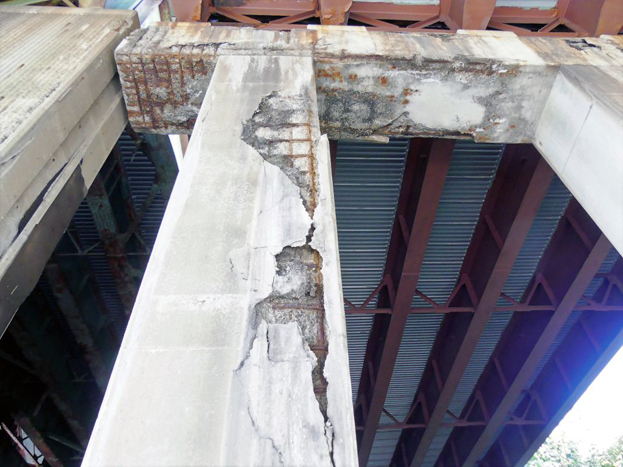After watching a series of promised national “infrastructure weeks” come and go over the past four years with no progress made to roll out a plan that would fix the country”™s roads, bridges and other failing infrastructure, believers in the need for a massive infrastructure effort are anticipating bipartisan support for at least some elements in President-elect Joe Biden”™s $2 trillion four-year infrastructure proposal.
The need for work on the nation”™s roads, bridges, sewer and water lines, airports, railroads and communications networks has been well-documented and the Biden plan positions the needed work as a surefire way to create millions of jobs, seize global technological leadership and grow the economy.

While it may be redundant for a motorist stopped by the side of a road because of a flat tire caused by a pothole the size of a moon crater, a new report by TRIP, a national transportation research nonprofit based in Washington, D.C., provides stark data on the condition, use and safety of New York”™s roads, highways and bridges and the state”™s future mobility needs.
The TRIP report states that New York drivers are saddled with staggering losses totaling $26 billion each year because of roads that are deteriorated, congested and lack some desirable features. The report lumps Westchester and Fairfield into the New York-Newark-Jersey City geographic area, while treating Poughkeepsie, Newburgh and Middletown in Dutchess and Orange counties as a distinct territory.
The report found that 47% of major roads in New York state are in mediocre or poor condition. In the area, including Westchester and Fairfield, it”™s 68% with only 10% rated as fair and 21% rated as good. In the Dutchess and Orange areas roads rate as 41% mediocre or poor, 21% fair and 38% good.
While vehicular traffic in the state dropped by as much as 45% beginning in April of this year due to Covid, by September it had rebounded to just 10% below what it had been in September 2019.
“The reality is we had an infrastructure deficit before we were dealing with the economic fallout of the Covid pandemic and to defer these types of investments and repairs is, frankly, bad fiscal policy because the need and the cost only gets worse as conditions get worse,” Mike Elmendorf, president of the Associated General Contractors of New York (AGCNY) told the Business Journal.
“In the Covid package that Congress just agreed to, there is an additional $10 billion nationwide for state departments of transportation. We believe that is going to translate into over $400 million of additional resources that would be available to invest in New York”™s roads and bridges,” Elmendorf said. “There”™s also significant investment in transit, which is good news. Looking forward, and I said the same thing four years ago and it didn”™t pan out but I”™m more hopeful now I guess, infrastructure is ripe for a bipartisan win.”
Elmendorf said that infrastructure is an obvious place for a new administration and Congress to come together to achieve something that is important for jobs and the economy.
“Our industry is ready to go and do the work. The need certainly is there in New York and across the country,” Elmendorf said.
Fred Hiffa, a consultant to Rebuild New York Now, a coalition supporting infrastructure improvement efforts that is based at the AGCNY Albany office, said, “For Hudson Valley residents, there are particular issues especially with bridges. The longer you defer the full reconstruction of the bridges and the pavement the bigger that bill gets and it gets to a point where you just can”™t sustain and continue to do the level of work that is necessary.”
Hiffa, who at one time served as first deputy commissioner of the New York State Department of Transportation, noted that not all of the taxes collected at the gas pump are paying for road improvements.
“We”™re looking for long-term answers, which we”™re really not seeing yet,” Hiffa said, referring to interruptions in the normal financial planning process due to the economic slowdown. “Historically, the DOT has had a five-year capital program matching the five-year federal capital program for highway funding because you don”™t build a bridge in a week. It”™s a multiyear process. You have to have that funding stream in place for multiple years.”
A TRIP report from September 2019 that covered Hudson Valley bridges said 13% were rated as poor/structurally deficient yet carried approximately 2.6 million vehicles each day. The report found that at that time 64% of the 2,551 Hudson Valley bridges were in fair condition, indicating that the structural elements are sound but minor deterioration has occurred to the bridge”™s deck, substructure or superstructure. There were 588 Hudson Valley bridges rated in good condition.
“Pothole season becomes a bigger event every year when we continue to Band-Aid things that should be rebuilt,” Elmendorf said, while crediting Gov. Andrew M. Cuomo for making infrastructure investments. “Even with that progress it”™s still a fraction of what”™s necessary to bring the system into a state of good repair. You look at what the DOT paving cycle is; it is stretched well beyond the expected life or the possible life of any paving material. We know that these pavements are not going to last but because of the available resources you”™re sort of in triage mode.”
Elmendorf pointed out that the construction industry has kept working throughout the pandemic on essential projects.
“On the highway side, the things that we”™re talking about, roads and bridges, they have been essential from day one,” Elmendorf said. “These men and women have been out there working, they”™ve been keeping commerce flowing, they”™ve been keeping paychecks flowing, they”™ve been keeping supply chains open, which is critical.”



















